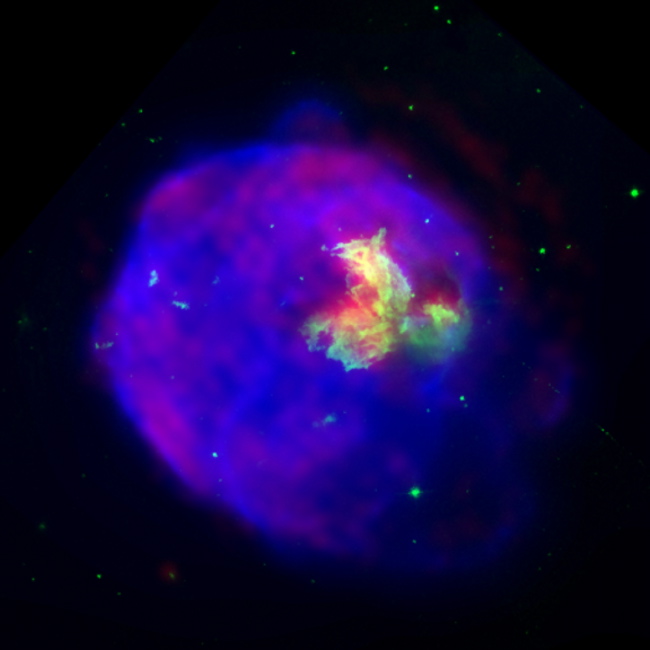
 Credit: X-ray: NASA/CXC/Rutgers/J.Warren et al.; Optical: NASA/STScI/U. Ill/Y.Chu; Radio: ATCA/U. Ill/J.Dickel et al.
Credit: X-ray: NASA/CXC/Rutgers/J.Warren et al.; Optical: NASA/STScI/U. Ill/Y.Chu; Radio: ATCA/U. Ill/J.Dickel et al.
Ornament
The beautiful colored ball of glowing gas pictured above is the remains of a cosmic catastrophe, the explosion of a star in the Large Magellanic Cloud, one of the Milky Way's companion galaxies. The image above is a composite of X-ray (blue), radio (red) and optical (green) images. The X-ray emission (imaged by the Chandra X-ray Observatory) is produced as the blast wave from the explosion plows into the material in the LMC. The radio emission (imaged by the Australia Telescope Compact Array) arises from cooler gas at the edge of the remnant and in a dense region to the upper right of the center of the remnant. The optical emission (imaged by the Hubble Space Telescope) also arises in this region. The death of this one star may trigger the formation of new stars, so the cycle of stellar death and birth continues.
Last Week *
HEA Dictionary * Archive
* Search HEAPOW
* Education
Each week the HEASARC
brings you new, exciting and beautiful images from X-ray and Gamma ray
astronomy. Check back each week and be sure to check out the HEAPOW archive!
Page Author: Dr. Michael F. Corcoran
Last modified Monday, 26-Feb-2024 17:46:10 EST


